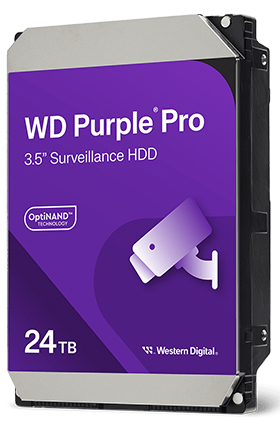
Smart video is a keystone of modern security and surveillance activity, with IDC estimating that by 2025 the global market for video surveillance cameras will have grown to nearly $50 billion.
Today, the use cases for smart video go beyond the traditional ways we think about security and surveillance. Next-gen smart video technologies are increasingly being utilised in various ways, from medical applications, sports analysis and factories to traffic management and even agricultural drones. As the demand for smart video grows, so does the use of artificial intelligence (AI), which acts to drive the development of data architectures at the edge.
AI can take computer intelligence capabilities – such as object recognition, movement detection, and tracking or counting objects/persons – and use these in the right application. Given the utility of these applications, it is not surprising that the amalgamation of video, artificial intelligence and sensor data is a hotbed for new services across industries.
The application of intelligent technology makes devices smart, enabling them to analyse data and deploy intelligent insights. In the case of smart video, these devices utilise AI and deep learning (DL) to analyse video data in real time, and deploy and execute orders faster than humans. For example, cameras and AI in smart cities analyse traffic patterns and adjust traffic lights accordingly to improve vehicle flow, reduce congestion and pollution, and increase pedestrian safety. In smart factories, cameras can detect flaws or deviations in the production line in real time, which is crucial for quality assurance, keeping costs down through automation and earlier fault detection.

Rise of the edge
The rise of on-camera AI chips means that AI completes real-time data analysis at the device level in the camera compared to the past when data analysis was only possible at a centralised location, such as a data centre. This increased processing at the edge is occurring in parallel with new technological and data infrastructure advancements, such as 5G.
As these technologies come together, they are impacting the architecture of the edge, and what we require from data storage. More specifically, they are driving a demand for specialised storage. Here are some of the biggest trends currently developing.
New numbers
Increased cameras means increased media-rich data to be captured, analysed and used to train AI. Simultaneously, cameras support higher resolutions (4K video and above). The more detailed and sharper the video, the more insights can be extracted from it, and thus, the more effective the AI algorithms can become. In addition, new cameras transmit not just a main video stream, but also additional low-bitrate streams, perfect for low-bandwidth monitoring and AI pattern matching.
Some of the biggest challenges for these types of workloads is the fact that they are always on. Especially necessary in the case of security, many smart cameras operate 24/7, 365 days a year, as is needed for their role.
One way storage has evolved to meet this challenge and is demonstrated in Western Digital’s WD Purple Pro line of HDDs and SSDs, which delivers intelligent smart video technology, high-performance data transfer speeds, and data writing speed to ensure high-quality video capture.
Extreme endpoints
The realm of security relies on more than just visual data. New types of cameras are being developed with new types of data to be analysed, and they can be placed in more locations, including atop buildings, inside moving vehicles, in drones, and even in doorbells.
The specific location in which smart cameras operate impacts the required storage technology. Those in climates with extreme temperatures, for example, will need to be durable and resilient. Certain storage solutions are designed with endurance and resiliency at the forefront. These offerings, including the highly reliable and industrial-grade e.MMC (embedded Multimedia Card) and UFS (Universal Flash Storage) embedded flash drives, can endure harsh environments, including those with extreme temperatures or vibrations, such as in a factory setting.
On-board AI
Increasingly, real-time decisions are being made at the edge at the device level due to improved camera computing capabilities. New chipsets are arriving for cameras that deliver improved AI capability, and more advanced chipsets offer deep neural network processing for on-camera deep learning analytics. To enable advanced AI functions, AI-enhanced chipsets and discrete GPUs (graphic processing units) are used in network video recorders (NVR), video analytics appliances, and edge gateways.
As the innovation within cameras continues, there is a rising expectation that deep learning – requiring large video data sets in order to be effective – will happen on-camera too, driving the need for more primary on-camera storage to handle a much bigger workload.

Cloud is here to stay
Most of the video analytics and deep learning for today’s smart video solutions and broader Internet of Things (IoT) applications are completed by discrete video analytics appliances or in the cloud.
The cloud has transformed to support these new AI workloads. Neural network processors within the cloud have adopted massive GPU clusters or custom FPGAs (field programmable gate arrays). They are being fed thousands of hours of training video and petabytes of data. This cloud activity requires specialised and robust storage, with workloads depending on high-capacity capabilities, such as those in the WD Purple Pro family.
The power of 5G
Until recently, the explosive adoption of security cameras has only been possible where LAN and WAN infrastructures exist. However, 5G is a game changer here.
5G removes many barriers to deployment, allowing more options for where a camera can be installed and easily used. With this ease of deployment comes new greater scalability, increasing use cases and encouraging further advancements in camera and cloud design. For example, cameras can now operate as stand-alone devices, rather than depending on a local network. They can utilise direct connectivity to a centralised cloud, and load and run third-party applications with broader capabilities.
With greater autonomy comes the need for even more dynamic storage. They will require new combinations of endurance, capacity, performance, and power efficiency to handle the variability of new app-driven functions.
Storage foundations
As AI-enabled video develops, it is crucial to understand how storage architectures must also change. With workloads, dynamic capabilities and deep learning analytics all increasing and evolving, data storage must be continuously innovating to support this.
As well as keeping pace with the demands of smart video, storage technologies should also enable advancements in use cases. From home security systems to public transport, smart video plays an increasingly critical role in society but would not be able to do so without a foundation of robust storage architecture.

© Technews Publishing (Pty) Ltd. | All Rights Reserved.